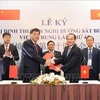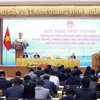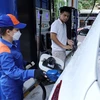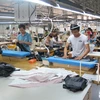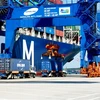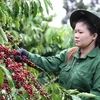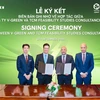Tra fish breeders must adopt Vietnamese Good Agriculture Practices (VietGap) or abide by international certifications suitable to Vietnamese law by the end of next year.
This is a condition they must meet if they wish to continue selling tra fish products.
Other conditions include that their locations and tra fish growing areas must comply with tra fish development plans approved by provincial People's Committees.
The breeders are required to register the fishing areas and estimated size of their catches with local authorised agencies that supervise aqualculture growing activities.
The agencies would then certify and grant code numbers for tra fish farms that meet these requirements, including breeding, feeding, providing medicine for fish and monitoring chemical uses.
These are part of the Government's decision, No 36/2014/ND-CP, concerning the raising of tra fish, as well as processing and exports of the fish.
The regulation was dated April 29 and takes effect June 20, 2014.
The decision also includes regulations concerning the quality and safety of Vietnam's processed tra fish products, as well as imports.
On product labels, information about net weights, chemicals or additives used during processing must be included, as well as information that Vietnam and importing countries require.
Under the decision, tra fish exporters will have to register and provide export contracts to the Vietnam Tra Fish Association.
Also, customs offices would only accept customs clearance procedures for exporting tra fish if the products are certificated by the association.
VietGap standards are based upon four criteria: disease control, environmental protection, social welfare, and traceability.
The application of VietGap standards would be essential for the aquaculture industry to provide products that meet the world market's requirements.
Consumers in many markets attach importance to certifications, such as GlobalGAP in Western Europe and the US and ASC in Northern Europe. VietGAP certificates covers those international standards.
Officials note that certificates encompass the issues of environmental protection, food hygiene and safety, social responsibility, and product origin.-VNA
This is a condition they must meet if they wish to continue selling tra fish products.
Other conditions include that their locations and tra fish growing areas must comply with tra fish development plans approved by provincial People's Committees.
The breeders are required to register the fishing areas and estimated size of their catches with local authorised agencies that supervise aqualculture growing activities.
The agencies would then certify and grant code numbers for tra fish farms that meet these requirements, including breeding, feeding, providing medicine for fish and monitoring chemical uses.
These are part of the Government's decision, No 36/2014/ND-CP, concerning the raising of tra fish, as well as processing and exports of the fish.
The regulation was dated April 29 and takes effect June 20, 2014.
The decision also includes regulations concerning the quality and safety of Vietnam's processed tra fish products, as well as imports.
On product labels, information about net weights, chemicals or additives used during processing must be included, as well as information that Vietnam and importing countries require.
Under the decision, tra fish exporters will have to register and provide export contracts to the Vietnam Tra Fish Association.
Also, customs offices would only accept customs clearance procedures for exporting tra fish if the products are certificated by the association.
VietGap standards are based upon four criteria: disease control, environmental protection, social welfare, and traceability.
The application of VietGap standards would be essential for the aquaculture industry to provide products that meet the world market's requirements.
Consumers in many markets attach importance to certifications, such as GlobalGAP in Western Europe and the US and ASC in Northern Europe. VietGAP certificates covers those international standards.
Officials note that certificates encompass the issues of environmental protection, food hygiene and safety, social responsibility, and product origin.-VNA
